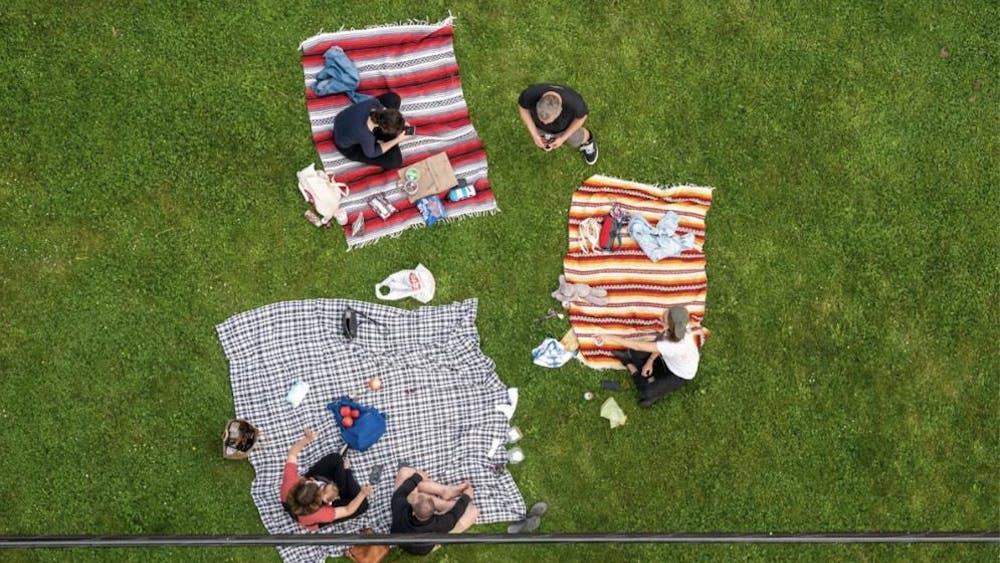On Thursday, January 24, University President Fr. John Jenkins appeared on Fox News to defend his decision to cover the Columbus murals. He emphasized that his intention was not to eradicate the legacy of Columbus, but rather to display the art in a context which gives a more sufficient historical background on Columbus’ expeditions. I agree with Fr. Jenkins that the murals were not erected to oppress. I also agree that context is important to interpret any piece of artwork. Fr. Jenkins’ decision to cover the murals, however, is misguided because he fails to provide any compelling reason why this “appropriate context” could not be created where the murals currently exist. Indeed, the only request of Young Americans for Freedom (YAF) and over 1,300 students, alumni and faculty in their petition is that the murals remain uncovered.Opponents claim the murals are Notre Dame’s version of a Confederate monument, that they serve as a symbol of oppression and are so odious as to warrant removal from their prominent place on campus. However, the murals are not akin to Confederate monuments. Some Confederate statues were created to intimidate black Americans and others to glorify a secessionist government. The Columbus murals, on the other hand, were painted with no such ill intent. Fr. Jenkins himself admits that the murals were “not intended to slight indigenous peoples, but to encourage another marginalized group, [Catholics].” Perhaps the most appropriate historical comparison to draw is between the movement to cover the murals, and the concealment of history by totalitarian regimes.While I understand the Native American Student Association of Notre Dame’s superficial frustration with the murals, if their goal is to educate and add context to the murals, covering the original art and recreating a digital version of it in an obscure area of campus does them a disservice. The murals prompt inquiry and presents Notre Dame students with difficult historical questions regarding both European exploration of the New World and rampant anti-Catholicism in America. In covering the murals in their original location, the University implies that it is ashamed of its history, and it denies its students the opportunity to evaluate the reality Fr. Edward Sorin faced in creating a Catholic university that also served as a mission to local Native Americans. Instead, the University should leave the murals as they stand. There is nothing to prevent Fr. Jenkins from providing ample “context” through more prominent brochures and signs. In covering the murals, the University denigrates its students by implying they are incapable of interpreting artwork, exploring history or facing controversial ideas. In the day-to-day experience of students at Notre Dame, the University works to expose students to different cultures through the many initiatives championed by the University. There are offices dedicated entirely to diversity, there is an official website for the university’s Native American Initiatives, and there is a mandatory first-year program that stresses cultural competence. While I believe these programs are unnecessary, if they are successful, Notre Dame students should have the cultural competence to look at uncovered artwork depicting Christopher Columbus. By covering these murals, the University not only denigrates its students, but implies that their programs aiming to improve cultural competency are ineffective and irrelevant.Lastly, I want to address the issue of covering history in part due to the demands of 340 offended students. If all it takes is 340 members of the Notre Dame community to cover the murals, shouldn’t the over 1,300 members of the Notre Dame community who disagree bring it back? The number of alumni alone who signed YAF’s petition is more than double the 340 students in the petition to cover the murals. By Fr. Jenkins’ logic, shouldn’t the opinions of those students and alumni be more heavily weighed to guide action? Further, there are other petitions, such as the petition to ban pornography on campus, that garnered far more than 340 signatures, yet remain unanswered. Who would have thought America’s Catholic university would censor Columbus, yet freely allow pornography to flow through its dorm rooms.Fr. Jenkins and those opposing his decision agree on the value of the murals, but disagree on whether they should be covered. The implementation of new exhibits to educate viewers may be appropriate, but covering history because a few students refuse to think critically and interpret artwork within its intended context is cowardice at best.
Grant Strobl
Notre Dame Law School
class of 2021
Feb. 1













